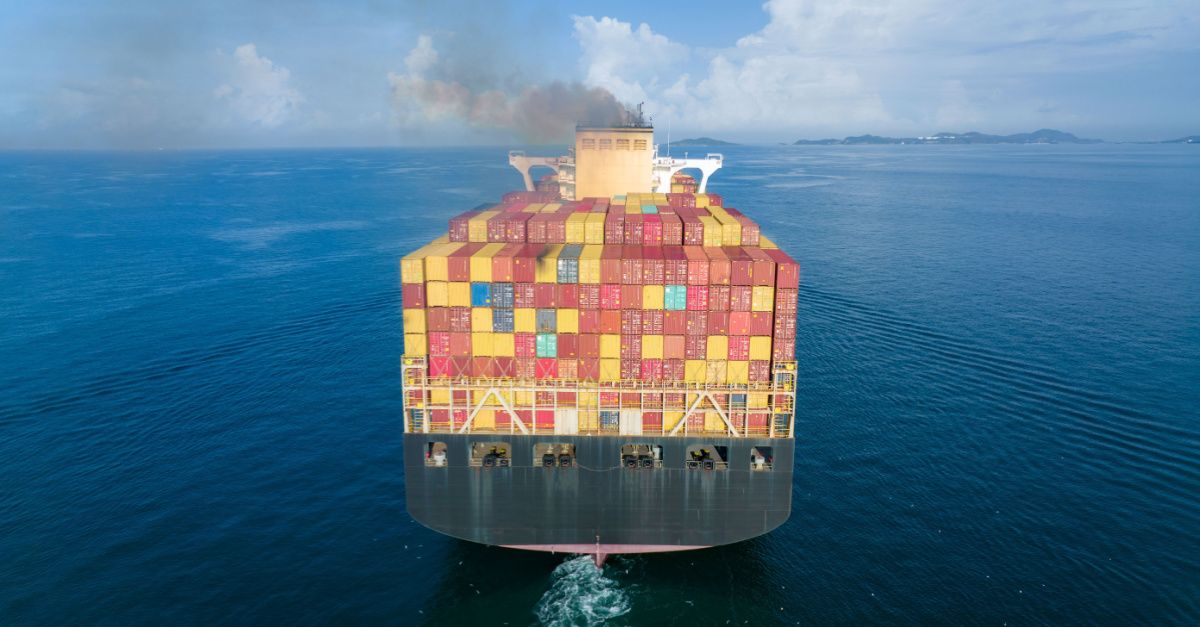
3 Strategies to Mitigate Scope 3 Supply Chain Emissions for Procurement Leaders: Envision, Engage, and Enact
Across the globe, the stakes are rising for climate inaction. 2023 is likely to be the hottest year ever recorded, after a record-setting June and July. We can expect rising global temperatures to continue unless more concerted efforts are made to reduce carbon emissions. Given the size and scope of global supply chains, freight transportation significantly contributes to many companies’ total emissions. This also means it offers the potential for significant progress when companies adopt the right strategies for freight procurement.
Procurement leaders can address their Scope 3 emissions—those from activities indirectly controlled by the reporting company, such as transportation, logistics, and more—with the option of a few different approaches. In this article, we’re outlining how to Envision, Engage, and Enact, three strategies companies can use to achieve their sustainability goals.
Envision: Setting Clear Goals and KPIs
The foundation of any sustainability effort lies in having a clear roadmap, which starts with establishing a baseline. Freight procurement managers must know the position their operations are starting at before they can identify realistically attainable goals and push for progress. With an in-depth baseline of the carbon emissions footprint, broken down by source as much as possible, leaders can outline the strategic sustainability targets they want to work toward.
For a goal to be meaningful, it must be measurable. Companies must define their KPIs from the beginning to help support the plan of action as well as corporate objectives. For example, they may track carbon emissions per shipment to identify shipment-specific improvement opportunities, or they might track supplier sustainability performance to ensure the company is working with third parties that also value sustainability.
Searoutes’ goal is to keep companies informed even starting with this first step, providing the data for setting quality carbon reduction targets. With accurate carbon footprint data and analytics, companies can make more focused decisions to guide their plan of action.
Engage: Initiating Sustainability-Focused Collaboration with Third Parties
Companies can amplify their sustainability impact through strategic collaboration with other companies involved in the supply chain. Suppliers, transportation companies, and others may need the push of this type of partnership to begin offering sustainable services. This might mean changing the way they operate, in this way impacting emissions, or changing how their customers can manage and have control over their emissions, for example, providing more service options or improving emissions data visibility. This collaboration makes more impactful sustainability progress possible, benefiting both businesses.
This collaborative approach can even extend to the customer. Companies can educate their customers and provide transparency into carbon footprints, giving them the power to make green decisions. Offering eco-friendly alternatives and incentivizing sustainable shipping choices can motivate customers to align with the company’s environmental objectives. This type of approach can be valuable in reducing emissions and can also bring the added benefit of fostering trust with customers. However, companies must ensure they have quality carbon emissions data through a provider like Searoutes to inform their and their customers’ options.
Enact: Implementing Sustainable Procurement Practices
This third approach, Enact, is where freight procurement comes in—converting plans of action (Envision) and collaboration wherever possible (Engage) into freight decisions. How do companies accomplish this? They need port-pair-specific carbon emissions data along with an understanding of emission risk profiles.
With the numerous factors impacting carbon emissions in freight, like different carriers, routes, vessels, and alliances around specific sequences of port calls, there can be a wide range of possible carbon emissions for a single trade lane. Risk profiles can help represent this variability, enabling better procurement decisions. If one option has low average carbon emissions and a high level of variability and another opportunity has low average carbon emission and a low level of variability, procurement managers would want to select the one with lower variability to help ensure their decisions lead to the low carbon emissions output they are intending. As procurement managers also consider factors like cost and speed, a comprehensive risk profile also provides this added information to help reveal beneficial options on multiple fronts.
Searoutes provides this level of carbon emissions data, made possible by an advanced modeled methodology that combines primary data, when available, with algorithms to reach a robust calculation for every shipment. This data is used in risk profiles of freight procurement options. This gives companies the full scope of data needed to make procurement decisions that will most effectively reduce their carbon footprint.
Fortify Your Scope 3 Sustainability Strategy with Searoutes
Any effective sustainability strategy starts with access to quality data. Searoutes helps companies find optimal opportunities to reduce their Scope 3 emissions by providing industry-leading granular data.
To learn more about Searoutes and our approach to carbon emissions data, reach out to us today for a demo.